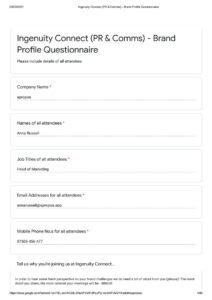An ecommerce website requirements document template is a crucial document that serves as a blueprint for developing a functional and successful online store. It provides a comprehensive overview of the website’s purpose, goals, functionality, and design specifications.
By defining these requirements upfront, businesses can ensure that their ecommerce website aligns with their business objectives and meets the needs of their target audience. It helps to avoid costly mistakes and delays during the development process and sets a clear foundation for a seamless implementation.
Essential Components of an Ecommerce Website Requirements Document
A well-structured ecommerce website requirements document template should include the following key components:
**Project Overview:** This section outlines the project’s background, objectives, and target audience. It defines the scope of the project and provides a clear understanding of the website’s intended purpose and functionality.
**User Requirements:** This section captures the specific needs and expectations of the website’s users. It includes information on user personas, their behavior, and their journey through the website. Understanding user requirements helps designers create an intuitive and user-friendly interface.
**Functional Requirements:** This section details the functionality the website should offer. It includes features such as product browsing, product filtering, shopping cart management, checkout process, and payment gateway integration. Defining functional requirements ensures that the website meets the core business requirements.
**Technical Requirements:** This section specifies the technical specifications of the website, such as web hosting, server configuration, database management, and security measures. It ensures that the website functions seamlessly across multiple devices and browsers.
Creating an Effective Ecommerce Website Requirements Document
To create an effective ecommerce website requirements document, businesses should follow these steps:
**Gather Stakeholder Input:** Engage with key stakeholders, including business analysts, marketing managers, IT professionals, and user experience designers, to gather their perspectives and insights.
**Conduct Market Research:** Analyze the market to identify industry trends, competition, and best practices. This helps you align the website’s design and functionality with market demands.
**Define User Persona:** Create user personas to represent the target audience for the website. These personas should include demographic information, motivations, and pain points to ensure the website caters to their specific needs.
**Prioritize Requirements:** Establish a clear priority for website requirements based on business objectives and user needs. This prioritization ensures that critical features are addressed first.
**Validate Requirements:** Review the requirements document thoroughly with stakeholders to obtain feedback and ensure alignment. This validation process minimizes errors and ensures the document accurately reflects the project’s expectations.
Conclusion
An ecommerce website requirements document template is an indispensable resource that guides the development of a successful online store. It serves as a roadmap for designers, developers, and stakeholders, ensuring a smooth and efficient process. By following a comprehensive and user-centric approach, businesses can create an ecommerce website that meets the needs of their customers and drives business growth.
Remember to use an ecommerce website requirements document template as the foundation for your project, but adapt it to fit your specific needs. With careful planning and execution, you can launch an ecommerce website that exceeds expectations and delivers exceptional online shopping experiences.
